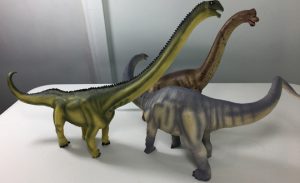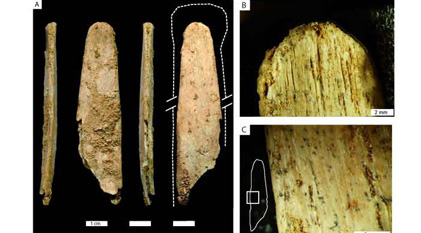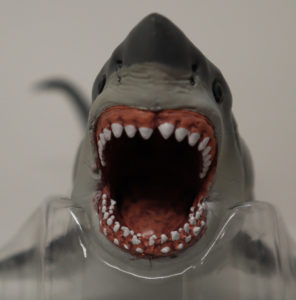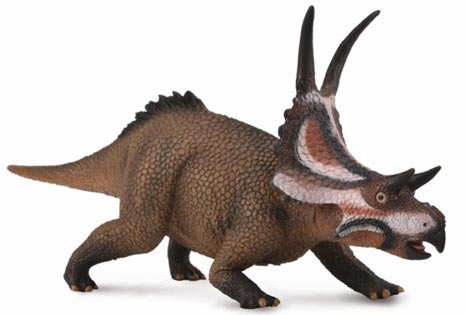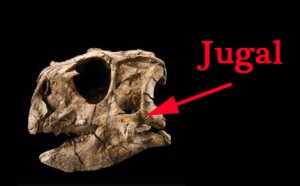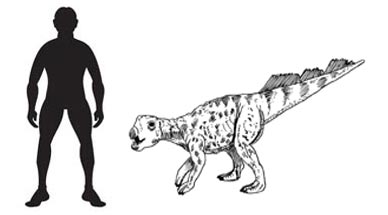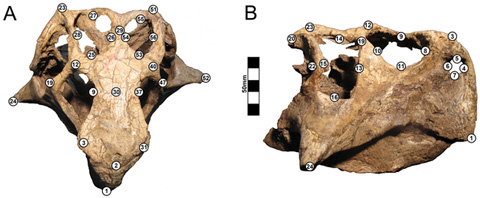165-Million-Year-Old Fossil Provided Evidence of Mammalian Evolution
A newly discovered fossil reveals the evolutionary adaptations of a 165-million-year-old proto-mammal, providing evidence that traits such as hair and fur originated well before the rise of the first true mammals. University of Chicago scientists described the biological features of this ancient mammalian relative, named Megaconus mammaliaformis, in a paper published in the latest edition of the academic journal “Nature”.
Megaconus mammaliaformis
Professor Zhe-Xi Luo one of the authors of the scientific paper stated:
“We finally have a glimpse of what may be the ancestral condition of all mammals, by looking at what is preserved in Megaconus. It allows us to piece together poorly understood details of the critical transition of modern mammals from pre-mammalian ancestors.”
An Illustration and Skeletal Reconstruction of M. mammaliaformis

Jurassic squirrel-like primitive mammal.
Picture credit: April Isch
The specimen, dating from the Bathonian faunal stage of the Middle Jurassic was discovered in Inner Mongolia, China. Megaconus is one of the best-preserved fossils of the mammaliaform groups, which are long-extinct relatives to modern mammals.
A terrestrial animal about the size of a large ground squirrel, Megaconus was most probably an omnivore, possessing clearly mammalian dental features and jaw hinge. Its molars had elaborate rows of cusps for chewing on plants, and some of its anterior teeth possessed large cusps that allowed it to eat insects and worms, perhaps even other small vertebrates. It had teeth with high crowns and fused roots similar to more modern, but unrelated, mammalian species such as rodents. Its high-crowned teeth also appeared to be slow-growing like modern placental mammals.
The skeleton of Megaconus, especially its hind-leg bones and finger claws, likely gave it a gait similar to modern armadillos, a previously unknown type of locomotion in mammaliaforms.
Preserved in the fossil is a clear halo of guard hairs and underfur residue, making Megaconus only the second known pre-mammalian fossil with fur. It was found with sparse hairs around its abdomen, leading the scientists to theorise that it had a naked abdomen. On its heels, Megaconus possessed a long keratinous spur, which was possibly poisonous. Similar to spurs found on modern egg-laying mammals, such as male platypuses, the spur is evidence that this fossil was most likely a male member of its species.
Mammalian Phylogeny – Our Family Tree
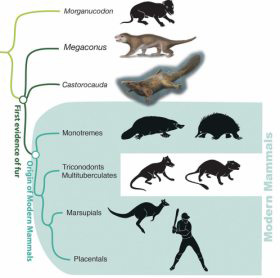
Tracing the mammalian family tree.
Picture credit: Luo Laboratory
Professor Luo went on to state:
“Megaconus confirms that many modern mammalian biological functions related to skin and integument had already evolved before the rise of modern mammals.”
However, Luo and his team identified clear non-mammalian characteristics as well. Its primitive middle ear, still attached to the jaw, was reptile-like. Its anklebones and vertebral column are also similar to the anatomy of previously known mammal-like reptiles.
When asked to comment on the possible connections between this Mid-Jurassic fur ball and our own ancestry, the professor said:
“We cannot say that Megaconus is our direct ancestor, but it certainly looks like a great-great-grand uncle 165 million years removed. These features are evidence of what our mammalian ancestor looked like during the Triassic-Jurassic transition. Megaconus shows that many adaptations found in modern mammals were already tried by our distant, extinct relatives. In a sense, the three big branches of modern mammals are all accidental survivors among many other mammaliaform lineages that perished in extinction.”
The fossil, now in the collections in Palaeontological Museum of Liaoning in China, was discovered at the famous Daohugou Fossil Site. It was studied by an international team of palaeontologists from Palaeontological Museum of Liaoning, University of Bonn in Germany and the University of Chicago.
The Slab and Counter Slab of the Fossil
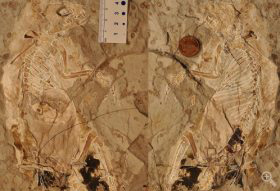
Megaconus mammaliaformis is preserved as a slab (left) and a counter-slab (right) of shale deposited in a shallow lake.
Picture credit: University of Chicago/Professor Zhe-Xi Luo
This specimen, and another fossil mammaliaform found in the same area in 2006 will help scientists to piece together the early evolution and radiation of primitive mammals that scurried around back in a time when the dinosaurs dominated.
Everything Dinosaur is grateful to the University of Chicago in the compilation of this article.
To view models and replicas of prehistoric animals: Dinosaur and Prehistoric Animal Models.


